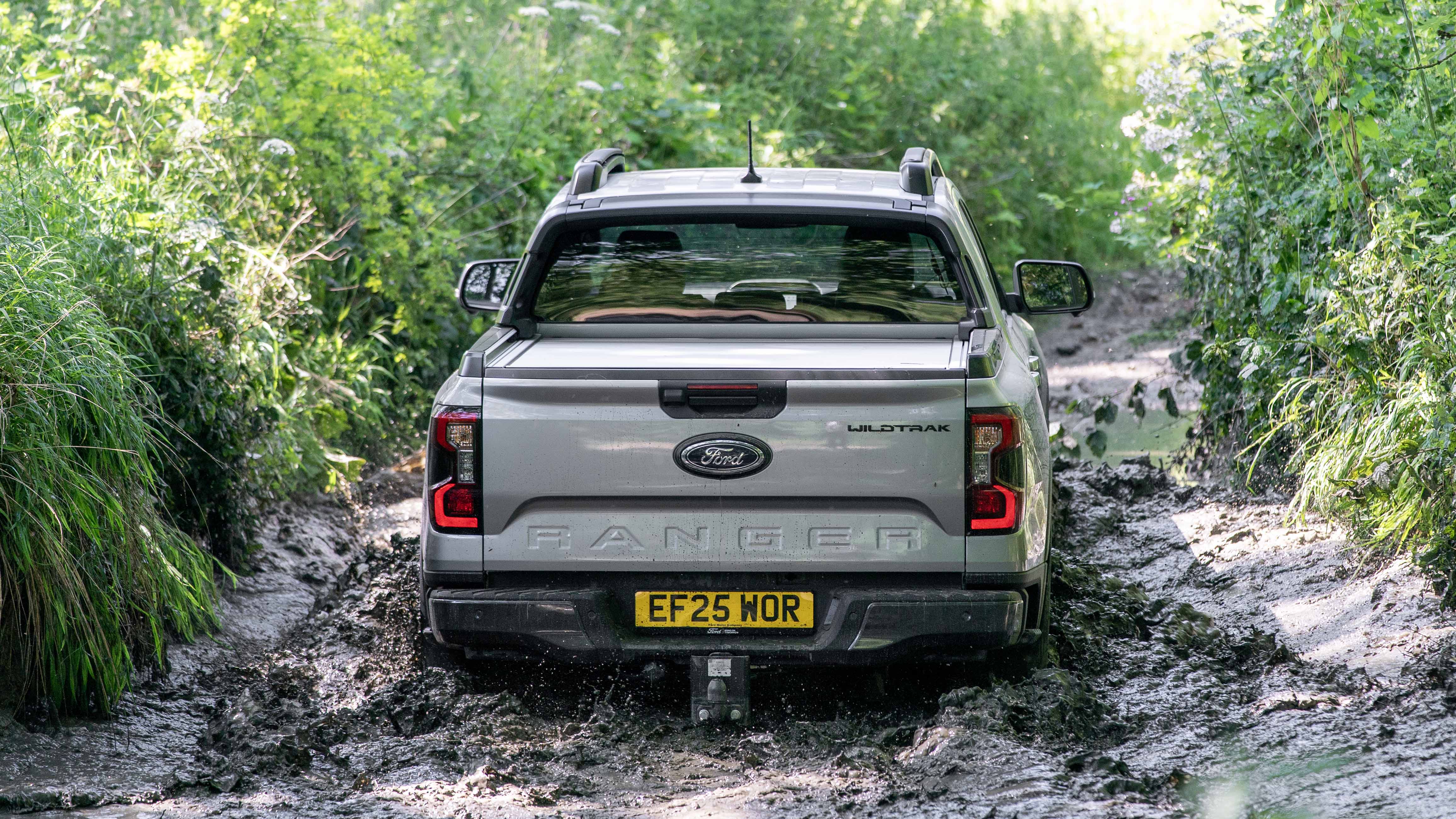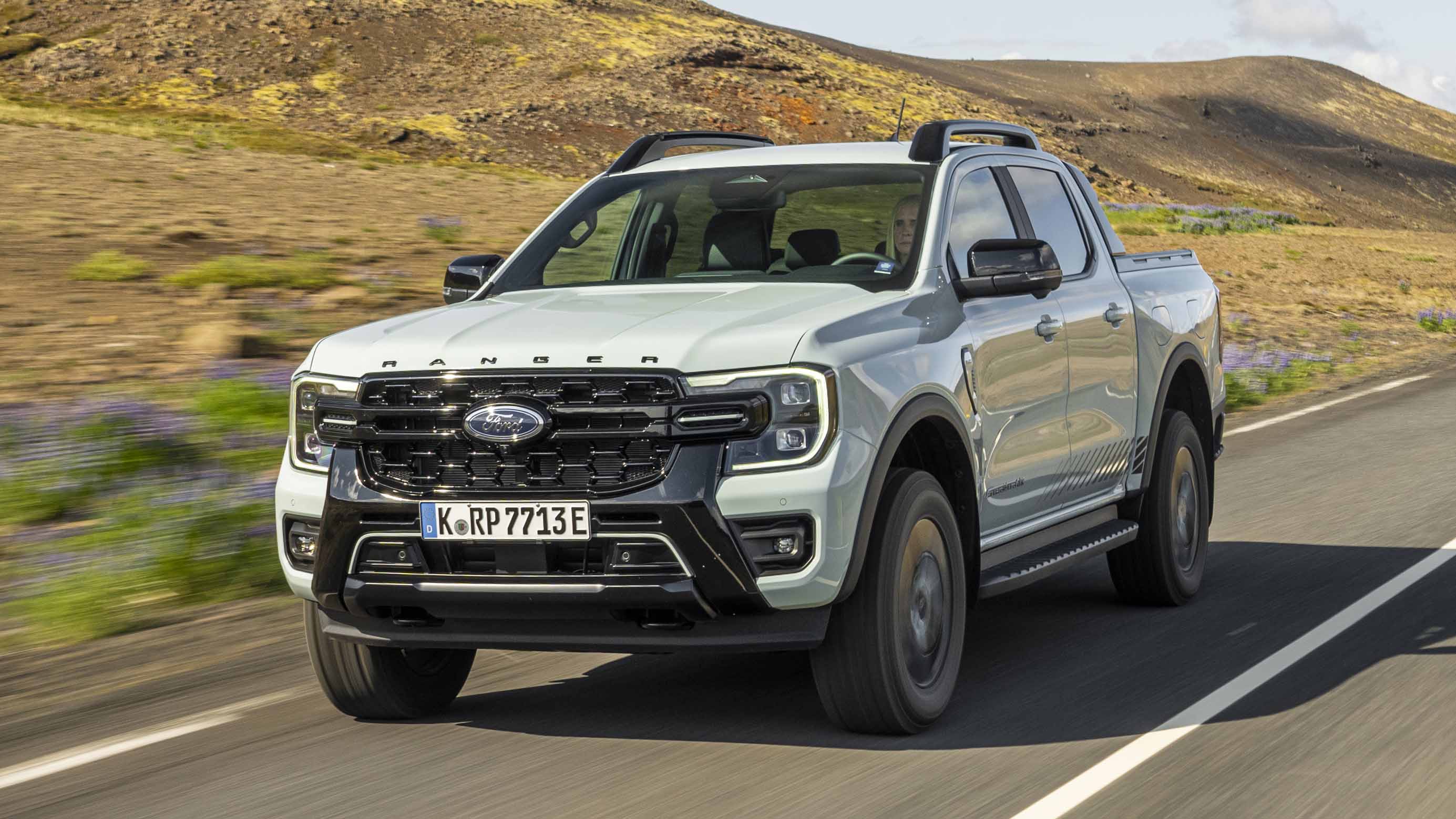
Ford Ranger review
Interior
What is it like on the inside?
We’ll start with the obvious: that huge portrait central touchscreen, measuring 10.1in in lower spec models, and 12in in upper spec models. It runs Ford’s SYNC 4 operating system, and take it from us, it’s an excellent bit of kit; easy on the eye, logical to operate, and smooth functioning. Though we’d be slightly worried about using our mucky paws on it after a hard day’s graft.
In front of the driver sits an eight-inch or 10.1in digital instrument cluster depending on the spec, but you get the usual physical switchgear on the steering wheel, and while almost everything is now controlled through said screen, Ford has also used common sense and retained the aircon controls, which are situated directly beneath, plus a few drive mode buttons on the centre console.
More family hauler, less workhorse, then?
Sure, the cabin itself feels a general step up in quality over the previous generation Ranger, with premium materials and soft touch plastic throughout, but the answer to that question really depends on the spec you go for.
Base-spec models are more rugged by nature and don’t pack quite the same creature comforts as upper models, with the range getting ever posher as you work your way up. More on that on the Buying tab, but the Wildtrack that we tested certainly felt as though it could be used for family duties with few complaints. The top-spec Platinum almost feels too posh for work purposes with its fancy leather trim.
You sit high, with a commanding view over the road, while the seats are hugely comfortable and plenty supportive. Rear visibility isn’t great, but rear sensors and camera are thankfully standard fit. There’s more space in the rear compared with the previous generation thanks to the longer wheelbase and wider track too.
Any gimmicks of note?
Well, the bed is now plastic-moulded to protect owners’ knees (and against scratches), and it’s now wide enough to fit a full-size pallet loaded sideways. There’s also extra tie-down points to secure loads, dividers to stop timber or toolboxes sliding around, a tailgate that doubles up as a workbench and a lighting system – touchscreen or app controlled – to help you see what you’re doing in the dark.
Browsing the spec list also revealed a ‘Power to the Box’ feature on top-spec models, which allows you to use tools, recharge batteries, or run appliances such as a kettle – because you can never have too much coffee – directly from the load bay. Handy. The power closing load bay cover is also pretty cool, but an expensive way to be lazy at £1,800.
Anything I need to know about the hybrid?
The only real differences are a few different displays on the inside, some buttons to control when you want to run on electric only, and a small 31mm ramp in the bed that allows the battery to sit underneath using a modified frame. So yes, there is ever so slightly less space in the back than you’d find in the diesel.
One major bonus though is the addition of Ford’s Pro Power Onboard tech. You’ll have to tick an option box to get it (although it’s free of charge on the top-spec Stormtrak), but it’s well worth it with the option of a hefty 6.9kW system that could run a compact cement mixer, an angle grinder and floodlights all at the same time. Impressive. There’s also a lighter 2.3 kW system that could run things like a portable fridge or charge e-bikes.
Featured

Trending this week
- Long Term Review
It's time to take our modified Jeep Wrangler Rubicon off-roading






